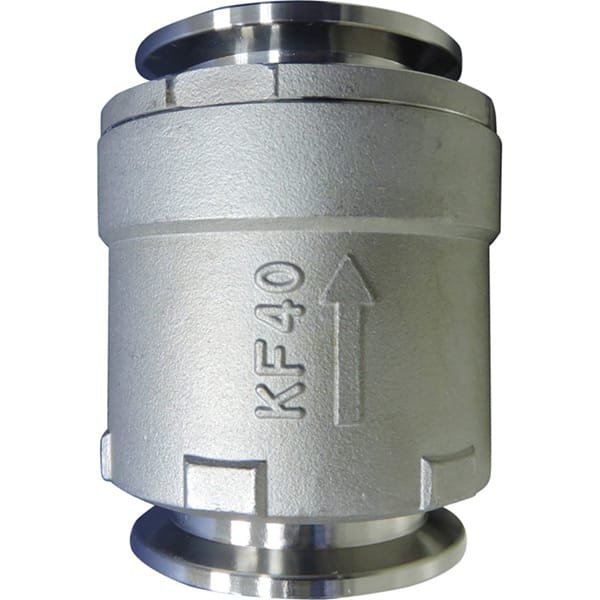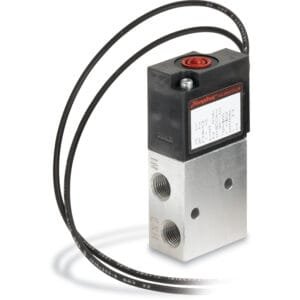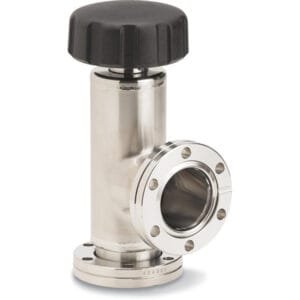Overview of Check Valves
These straightforward check valves are designed to inhibit air from entering a system after the rough pump is turned off. Commonly positioned on the exhaust side of the roughing pump, they effectively prevent the backflow of oil during pump shutdowns or failures. Depending on the installation requirements, these valves can utilize a gravity-sealed elastomer ball for vertical setups or a spring-loaded O-ring sealed disc that allows for installation in various orientations.
Key Features
- Constructed from 316 stainless steel with FKM seals
- Minimum relief pressure of 7 mbar
- Leak rate specification of 1 × 10⁻⁵ mbar-L/sec
- Recommended for scenarios where air influx might draw particulates into the system
- Helps mitigate oil backflow from wet pumps
- Operational temperature range: approximately -5°C to 100°C
Specifications Table
| Manufacturer | TFM |
|---|---|
| Pressure | Torr 7.500 x 10-5 Torr mbar 1.000 x 10-4 mbar |
| Rates | Leak Rate 1.000 x 10-5 mbar*L/s 7.520 x 10-6 Torr*L/s Minimum Relief Pressure 7.00 mbar 5.25 Torr |
| Temperature | Bakeable 100 ºC 212 ºF |
| Valve Body Material | 316L SS |
| Valve Seal Material | Viton |





Reviews
There are no reviews yet.